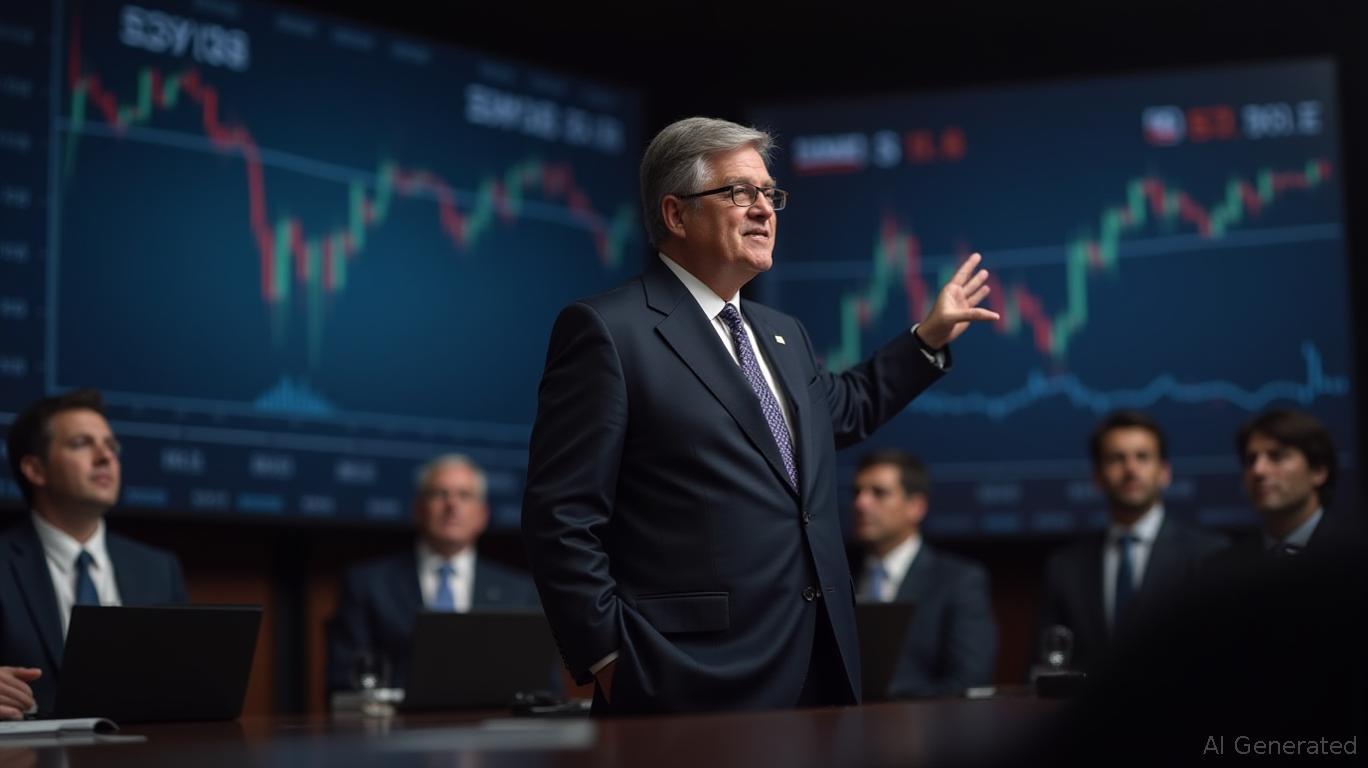Bitcoin Updates: SFC Outlines Strategy to Harmonize Cryptocurrency Advancement and Safeguard Investors
- SFC proposes custodian guidelines and explores listed firms buying Bitcoin to boost institutional adoption and regulatory clarity. - DeLeion Capital launches real-time monitoring framework with audits to address sector volatility and fragmentation. - DBS and Goldman Sachs execute first OTC crypto options trade in Singapore, signaling maturing markets and institutional integration. - ASIC expands oversight, requiring $10M+ net assets for custodians and enforcing local laws on offshore platforms targeting
The Chairman of the Securities and Futures Commission (SFC) has revealed intentions to issue new guidelines for digital asset custodians and to assess whether it is viable for publicly listed firms to acquire
Recent events have underscored the need for such direction. DeLeion Capital, a global platform specializing in digital asset management, has introduced a sophisticated

The pace of institutional involvement is quickening, as shown by a groundbreaking deal between DBS and Goldman Sachs. These two financial institutions completed the first over-the-counter (OTC) cryptocurrency options trade involving both Bitcoin and
Regulatory systems are adapting as well. The Australian Securities and Investments Commission (ASIC) has broadened its regulatory reach over digital assets, clarifying that numerous tokens and stablecoins are subject to current financial regulations. The agency has established custodial requirements, mandating that companies hold up to $10 million AUD in net tangible assets, and has cautioned that overseas platforms serving Australian clients must still comply with local regulations,
Progress in infrastructure is also playing a pivotal role. BitGo, a prominent digital asset custodian, has added Canton Coin (CC) to its custody services, improving institutional access to tokenized real-world assets (RWAs), as noted in a
The SFC’s forthcoming guidance for custodians could help close existing regulatory gaps, providing secure and compliant storage options as more institutions turn to digital assets. The consideration of allowing listed companies to hold Bitcoin mirrors larger trends, such as DBS clients trading $1 billion in crypto options in the first half of 2025, as reported by Finews, and the global tokenization of $35 billion in RWAs.
As the distinction between conventional finance and digital assets continues to
Disclaimer: The content of this article solely reflects the author's opinion and does not represent the platform in any capacity. This article is not intended to serve as a reference for making investment decisions.
You may also like
Bitcoin Updates: Fed’s Softer Stance Supports Both Economic Expansion and Inflation—Positive Momentum for Crypto
- The U.S. Federal Reserve cut rates by 25 bps to 3.75%-4.00% on October 29, 2025, ending quantitative tightening by December 1, easing liquidity constraints. - Crypto markets initially dipped post-announcement but gained analyst support as lower rates and weaker dollar historically boost Bitcoin and Ethereum as hedges. - Institutional crypto demand remained strong with Coinbase reporting 2,772 BTC inflows and Bitcoin ETFs seeing net inflows, while Tether's USDT supply surpassed $183 billion. - The Fed's "

Bitcoin News Update: Bitcoin Rally Drives $2.8B in Gains While Strategy's Shares Drop 15% Year-to-Date
- Strategy Inc. (MSTR) reported $2.8B Q3 2025 net income from Bitcoin's $70.6B portfolio (640,808 BTC) amid $20B unrealized gains. - New fair value accounting rules enabled profit recognition without selling Bitcoin, reversing $340M 2024 losses and boosting operating income to $3.9B. - CEO Phong Le targets $34B operating income if Bitcoin hits $150K, while $20B 2025 capital raises expanded holdings by 40,000 BTC. - Despite 51.74% BTC gains, shares fell 15.15% YTD due to dilution concerns, contrasting with

MEV's Tendency to Centralize Poses a Challenge to the Fundamental Principles of DeFi
- MEV (Maximal Extractable Value) destabilizes DeFi markets by enabling miners/validators to reorder transactions for profit, imposing a "hidden tax" on retail traders through front-running and sandwich attacks. - Aditya Palepu highlights systemic risks: 80% of MEV costs fall on retail users, while institutions avoid DeFi to mitigate front-running risks, undermining market liquidity and stability. - Trusted Execution Environments (TEEs) encrypt transactions pre-execution to block front-running, but vulnera

MEV Takes Advantage of DeFi Transparency, Triggering Concerns Over Fairness
- MEV exploits blockchain transparency to reorder transactions, creating a "hidden tax" that deters institutional DeFi adoption and harms retail users. - Sandwich attacks and front-running cost retail investors up to 80% of MEV-driven losses, with 24% of Ethereum blocks affected annually. - Trusted execution environments (TEEs) emerge as a solution by privatizing transaction data, potentially unlocking $trillions in institutional capital. - Experts warn MEV centralizes power and inflates costs, requiring g
